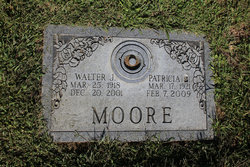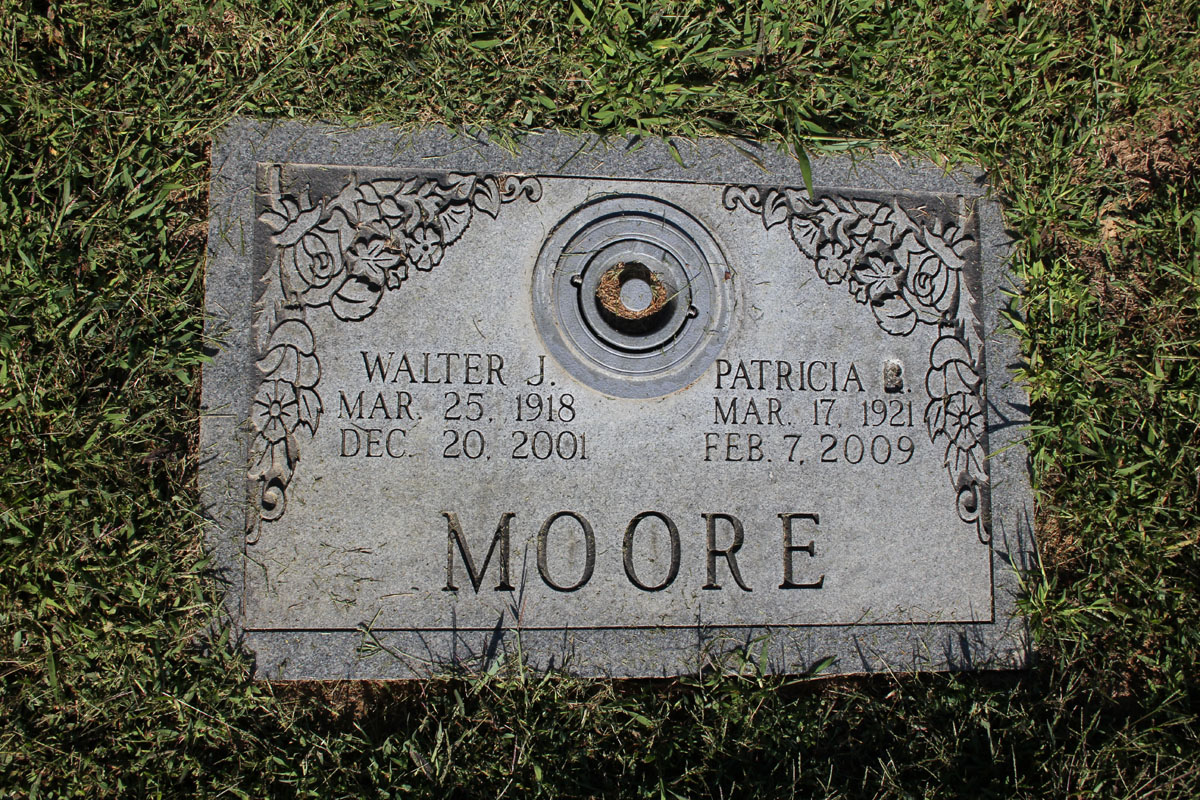Moore is famous for his text Physical Chemistry that permanently changed the subject when it first appeared in 1950 and was the standard of the field for more than thirty years, both in the U.S. and overseas. He was also the author or co-author of over 200 scientific research papers in the fields of photochemistry, solid-state chemistry, neurochemistry and protein chemistry.
Born March 25, 1918, in New York City, N.Y., he was the son of Walter John and Ruth (Hart) Moore.
He received his Bachelor of Science degree from New York University at the age of 19 and his Ph.D. in chemistry from Princeton University three years later. He then joined Linus Pauling at the California Institute of Technology for a year of postdoctoral research as a National Research Council Fellow.
Moore was involved in the Manhattan Project during the war years 1941-1945. His academic career began at the Catholic University of America (Washington, D.C.) where he spent five years before spending a year at the University of Bristol, England, as a Fulbright Fellow with also a Guggenheim Fellowship. He joined the Indiana University chemistry faculty as a Professor in 1952 and was appointed Research Professor in 1963.
During his 21 years at IU, he also held visiting Professorships at Harvard, the University of Paris, the University of Brazil and the University of Queensland, Australia. His research evolved from solid-state chemistry to neurochemistry at IU and his text book appeared in new editions, the fourth of which was translated into eight languages.
In 1974, Moore took up his appointment to the Chair of Chemistry at the University of Sydney, where, in addition to his administrative duties, he became heavily involved in protein chemistry. One of the triumps of that research was the determination of the shape of a protein that is almost certainly linked to the crippling mechanism of the disease multiple sclerosis.
After retirement from the University of Sydney in 1983, he was appointed Adjunct Professor of chemistry at IU. His initial retirement years were spent with vigorous efforts to uncover source materials for his biography of the physicist Erwin Schrodinger, a developer of quantum mechanics, the theory of atoms and molecules.
The biography Schrodinger, Life and Thought appeared to wide acclaim in 1989. The New York Times Book Review noted "it surpasses even the 'Double Helix' by James Watson in its examination of the most visceral drives of a great scientist." It was the subject of a full article in the New Yorker magazine and received an award for the most outstanding book of the year in its class from the American Association of Publishers.
Moore had a keen interest in philosophy as well as in the history of science and reviewed books on these subjects for national publications. He had an extensive collection of rare science books dating back to Sir Isaac Newton's Opticks, and hundreds of these valuable editions have been given to libraries.
His gift of writing often used to argue for social causes. In addition to other publications, his letters and comments have appeared in The Herald-Times. For example, a series of articles concerned his efforts to have the retirement fund used by IU abandon its practice of investing in tobacco stocks. The existence of "social choice" funds in these investment services may in part reflect these efforts.
His memberships include St. Paul's Catholic Center in Bloomington.
Moore is survived by his wife, Patricia (Bacon) Moore of Bloomington; one son, Anthony G. Moore of Fairbanks, Alaska; two daughters, Julia Elizabeth McCready of Bellingen, New South Wales, Australia, and Dr. Kate H. Moore of Sydney, Australia; one sister, Mary M. Wiecha of Belfast, Maine; four grandchildren, Jennifer Ann Moore of Bloomington, Johann Habgood, Lewis Habgood, and Belle Habgood, all of Bellingen, New South Wales, Australia; and one great-granddaughter, Bethany Habgood of Bellingen, New South Wales, Australia.
He was preceded in death by one brother, Albert Moore.
Services will be 10 a.m. Monday, Dec. 24, 2001, at St. Paul's Catholic Center with Father Dan Atkins officiating.
There will be no visitation.
Burial will be held at a later date.
Allen Funeral Home is in charge of arrangements.
The Herald-Times, Dec 22, 2001
Moore is famous for his text Physical Chemistry that permanently changed the subject when it first appeared in 1950 and was the standard of the field for more than thirty years, both in the U.S. and overseas. He was also the author or co-author of over 200 scientific research papers in the fields of photochemistry, solid-state chemistry, neurochemistry and protein chemistry.
Born March 25, 1918, in New York City, N.Y., he was the son of Walter John and Ruth (Hart) Moore.
He received his Bachelor of Science degree from New York University at the age of 19 and his Ph.D. in chemistry from Princeton University three years later. He then joined Linus Pauling at the California Institute of Technology for a year of postdoctoral research as a National Research Council Fellow.
Moore was involved in the Manhattan Project during the war years 1941-1945. His academic career began at the Catholic University of America (Washington, D.C.) where he spent five years before spending a year at the University of Bristol, England, as a Fulbright Fellow with also a Guggenheim Fellowship. He joined the Indiana University chemistry faculty as a Professor in 1952 and was appointed Research Professor in 1963.
During his 21 years at IU, he also held visiting Professorships at Harvard, the University of Paris, the University of Brazil and the University of Queensland, Australia. His research evolved from solid-state chemistry to neurochemistry at IU and his text book appeared in new editions, the fourth of which was translated into eight languages.
In 1974, Moore took up his appointment to the Chair of Chemistry at the University of Sydney, where, in addition to his administrative duties, he became heavily involved in protein chemistry. One of the triumps of that research was the determination of the shape of a protein that is almost certainly linked to the crippling mechanism of the disease multiple sclerosis.
After retirement from the University of Sydney in 1983, he was appointed Adjunct Professor of chemistry at IU. His initial retirement years were spent with vigorous efforts to uncover source materials for his biography of the physicist Erwin Schrodinger, a developer of quantum mechanics, the theory of atoms and molecules.
The biography Schrodinger, Life and Thought appeared to wide acclaim in 1989. The New York Times Book Review noted "it surpasses even the 'Double Helix' by James Watson in its examination of the most visceral drives of a great scientist." It was the subject of a full article in the New Yorker magazine and received an award for the most outstanding book of the year in its class from the American Association of Publishers.
Moore had a keen interest in philosophy as well as in the history of science and reviewed books on these subjects for national publications. He had an extensive collection of rare science books dating back to Sir Isaac Newton's Opticks, and hundreds of these valuable editions have been given to libraries.
His gift of writing often used to argue for social causes. In addition to other publications, his letters and comments have appeared in The Herald-Times. For example, a series of articles concerned his efforts to have the retirement fund used by IU abandon its practice of investing in tobacco stocks. The existence of "social choice" funds in these investment services may in part reflect these efforts.
His memberships include St. Paul's Catholic Center in Bloomington.
Moore is survived by his wife, Patricia (Bacon) Moore of Bloomington; one son, Anthony G. Moore of Fairbanks, Alaska; two daughters, Julia Elizabeth McCready of Bellingen, New South Wales, Australia, and Dr. Kate H. Moore of Sydney, Australia; one sister, Mary M. Wiecha of Belfast, Maine; four grandchildren, Jennifer Ann Moore of Bloomington, Johann Habgood, Lewis Habgood, and Belle Habgood, all of Bellingen, New South Wales, Australia; and one great-granddaughter, Bethany Habgood of Bellingen, New South Wales, Australia.
He was preceded in death by one brother, Albert Moore.
Services will be 10 a.m. Monday, Dec. 24, 2001, at St. Paul's Catholic Center with Father Dan Atkins officiating.
There will be no visitation.
Burial will be held at a later date.
Allen Funeral Home is in charge of arrangements.
The Herald-Times, Dec 22, 2001
Family Members
Sponsored by Ancestry
Advertisement
Records on Ancestry
-
Indiana, U.S., Death Certificates, 1899-2017
-
U.S., Social Security Applications and Claims Index, 1936-2007
-
Rio de Janeiro, Brazil, Immigration Cards, 1900-1965
-
District of Columbia, U.S., Marriage Records, 1810-1953
-
Australia and New Zealand, Newspapers.com™ Obituary Index, 1800s-current
Sponsored by Ancestry
Advertisement





